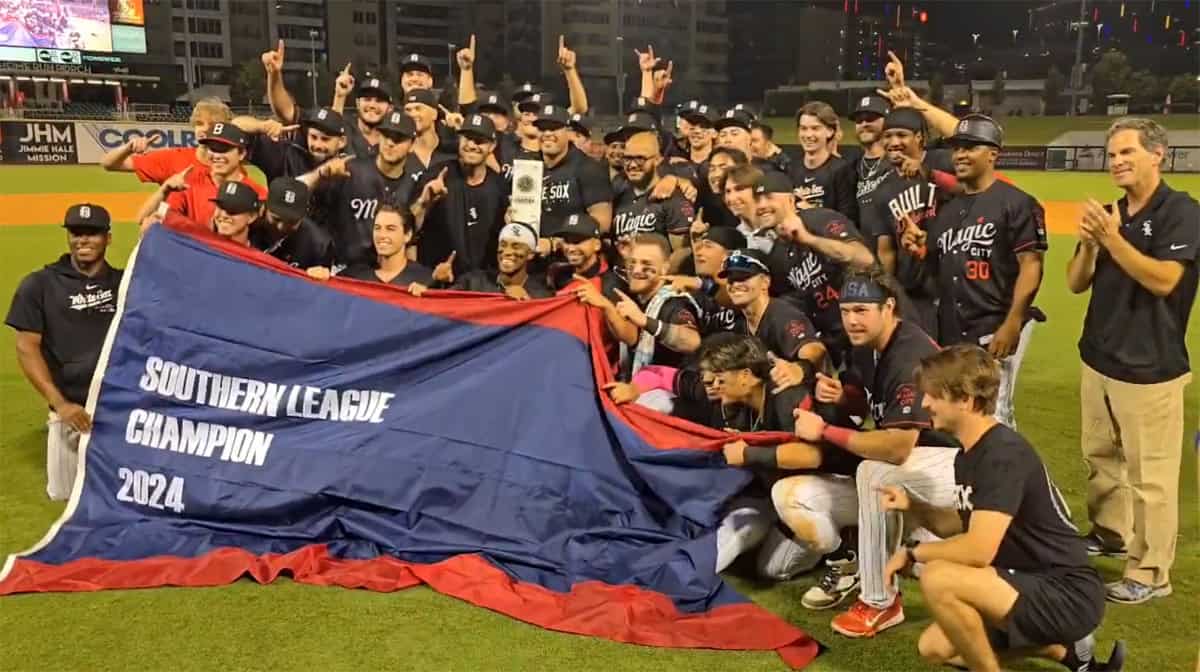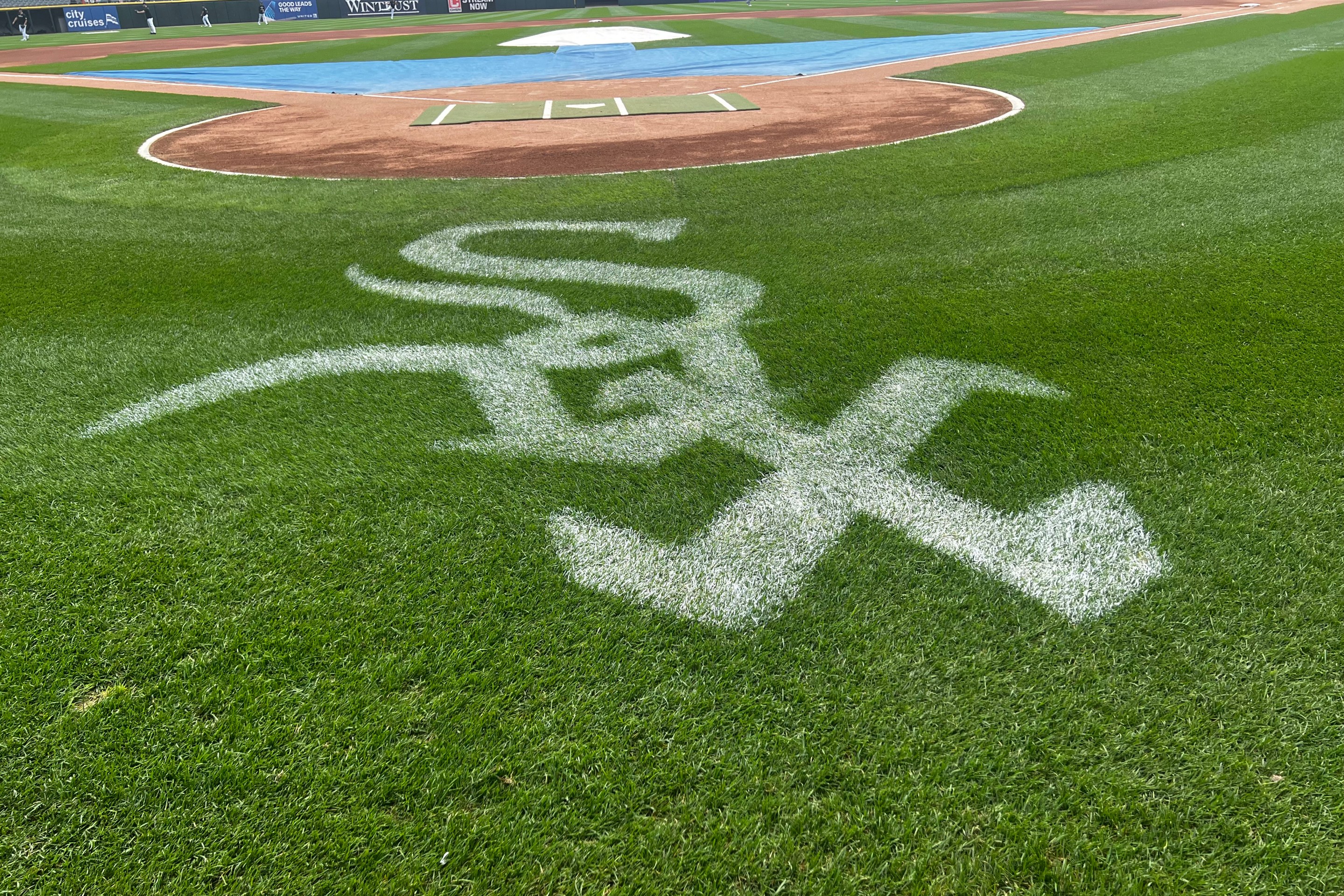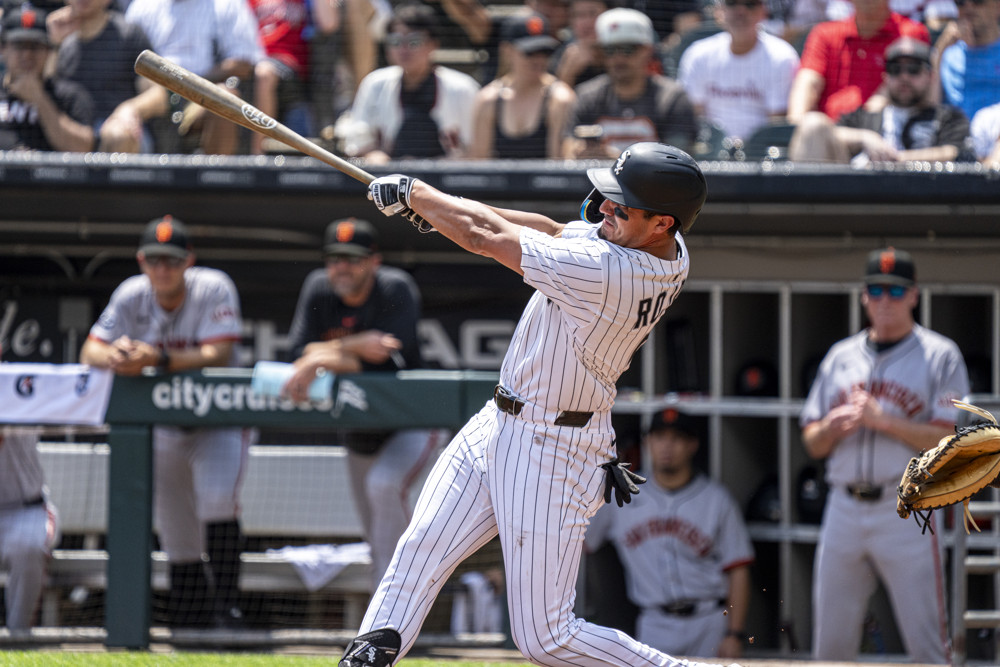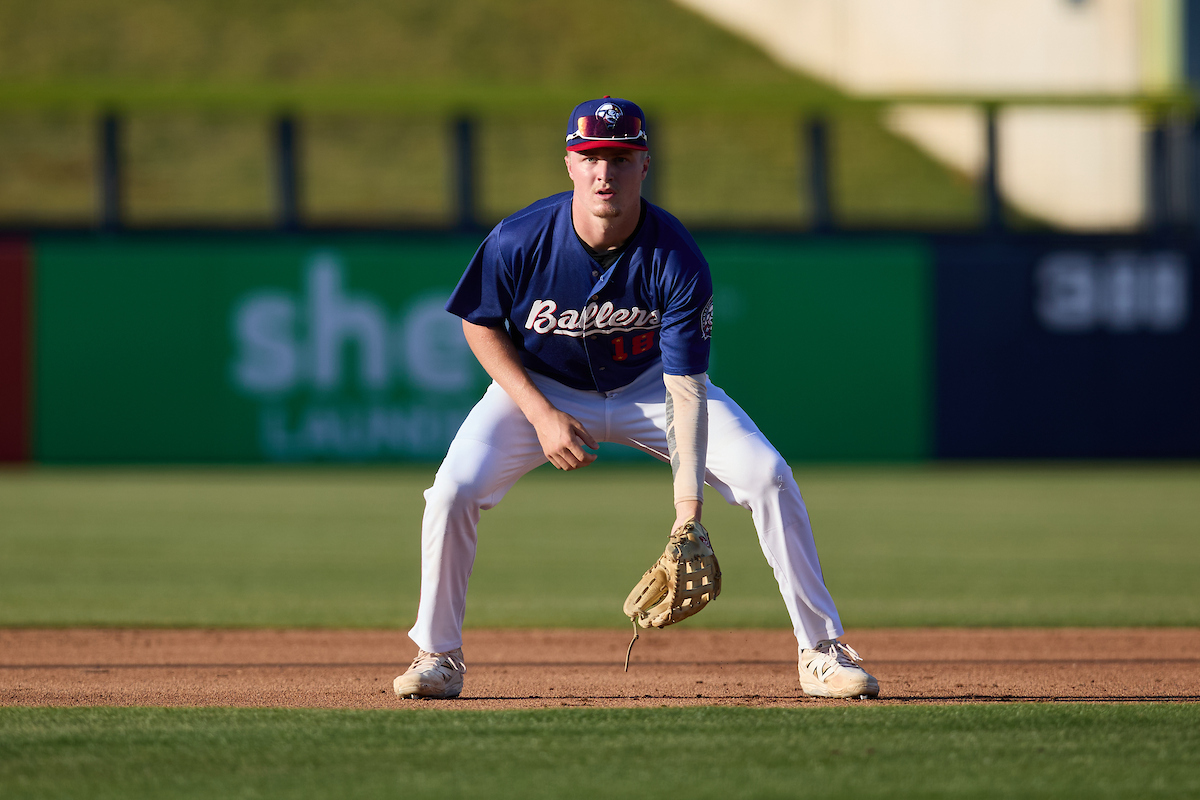Because the Birmingham Barons won the Southern League championship last month -- their first league title since 2013 -- we already reviewed the shape of their season.
To sum it up: They looked like world-beaters out of the gate and hung together long enough for a first-half title before attrition through promotions in the second half rendered them ordinary. Because they'd punched their playoff ticket in June, they only needed to put it all together at the very end of the season, which they did by beating Tennessee in three games in the division series, and taking both games from Montgomery for the title.
Now it's time to drill down. If there was one knock on the Barons, the offense never quite put it together, even when they were fully stocked.
| Hitters | Age | R/G | BB% | K% | AVG/OBP/SLG |
|---|---|---|---|---|---|
| Birmingham | 23.9 | 3.87 | 9.4 | 23.5 | .237/.317/.336 |
| League | 23.7 | 4.04 | 9.6 | 24.3 | .232/.315/.349 |
Edgar Quero and Brooks Baldwin did just about all they could at this stage in their careers, but the Barons were light on impact elsewhere. Their 77 homers and .336 slugging percentage were both the second-worst in an eight-team league, with only Mississippi trailing. A lack of upward trajectory in Winston-Salem didn't help once the successful Barons began ascending, and the lineup that won the championship was rather reliant on org players.
The pitching, however, remained a constant force despite turning over the entire Opening Day rotation.
| Pitchers | Age | RA/9 | BB% | K% |
|---|---|---|---|---|
| Birmingham | 23.7 | 3.55 | 9.7 | 25.1 |
| League | 24.5 | 4.19 | 9.6 | 25.8 |
John Ely's crew allowed 30 fewer runs than the next-closet team (also Mississippi), and their starting pitchers came within one out of throwing 700 innings. To provide some context about how effective the Birmingham rotation was, the only three teams to get more from their starters were in Triple-A, and that's because they played at least 11 more games.
- Tacoma (AAA), 757 IP over 150 G (5.06 IP/GS)
- Gwinnett (AAA), 715.1 IP over 150 G (4.77)
- Salt Lake (AAA), 713.1 IP over 149 G (4.79)
- Birmingham (AA), 699.2 IP over 138 G (5.07)
- Mississippi (AA), 696.1 IP over 136 G (5.12)
While the pitchers making those starts in the second half lacked the kind of prospect heat the Opening Day roster possessed, they held together well enough that the Barons weren't punished for success. Instead, they kept succeeding.
Position players
Jacob Gonzalez: For a while, it looked like Gonzalez had found it. His season line -- .238/.307/.343 between two levels, .225/.284/.321 at Birmingham -- said he lost it. He said he was "uncomfortable" the whole year as he attempted to get accustomed to mechanical changes that helped him cover the outside of the plate, but hurt him staying back on offspeed pitches, and it was particularly evident across June and July, when he hit .184/.242/.242 over 49 games during those two months.
He rebounded to finish the year hitting .257/.329/.403 from Aug. 1 to the end of the season, including an impactful showing in the Barons' championship run. He came back from back tightness and went 7-for-15 with a homer, double and three walks over four playoff starts, all victories. Between the lessons learned while toiling and the emphasis on strength-building during the season and into the winter, the hope is that September represents something closer to a floor going forward.
Wilfred Veras: Considering Veras had a successful 38-game audition with the Barons in 2023, spending the entire season in Birmingham probably isn't what he wanted. He hit .267/.319/.424 over 128 games, accruing decent counting stats across the board -- 27 doubles, 16 homers, 25 stolen bases, and even a career-high 34 walks. It's not terribly different from what he did in Winston-Salem the year before (.277/.316/.438), and it's not a bad season for a 21-year-old in Double-A.
Like Gonzalez, he just had a lengthy midsummer swoon that highlighted the weaknesses in his profile. From May through July, Veras hit .225/.271/.363, with 75 strikeouts and 10 double plays against just 15 walks over 70 games. Like Gonzalez -- better, actually -- he salvaged his line with a strong finish. From Aug. 1 through the rest of the season, Veras hit .310/.389/.474, drawing 20 walks over 193 plate appearances and just three GIDPs. Considering Veras came into the year with a 6.5 percent walk rate in his minor league career, a double-digit walk rate over any meaningful sample is a strange and welcome development that would change his forecast considerably.
DJ Gladney: Gladney's mettle was tested during a frustrating 2024. A dreadful start with the Dash had him in Winston-Salem longer than he'd like, with multiple bouts of an oblique strain interrupting his momentum moving past it. He finally received his promotion to Double-A in early August, and hit .274/.315/.470 with Birmingham the rest of the way, even bouncing back from one more IL stint looking no worse for the wear. He capped off his season -- and Birmingham's, for that matter -- with the walk-off single that sealed the Barons' Southern League title.
He's wrestled his strikeout rate over the years into a manageable territory (23.6 percent in Double-A) while hitting for power, and the 23-year-old is an opportunistic baserunner who has played all across the outfield. The walk rate - just five over 127 plate appearances -- is the biggest eyesore.
Rikuu Nishida: Nishida led the minor leagues with 114 runs scored over 127 games, a remarkable feat for somebody who only homered once all season, and only had 19 other extra-base hits for that matter. The White Sox allowed him to pad his numbers by spending the first 90 of those games at Kannapolis, where he keyed a league-best offense with a .415 OBP and 35 stolen bases at the top of the order, but his production remained steady even after the White Sox promoted him twice over the final two months.
- Kannapolis: .290/.415/.367 over 418 PA
- Winston-Salem: .337/.436/.357 over 119 PA
- Birmingham: .333/.400/.333 over 50 PA
Nishida will try to tackle the lack of power in the offseason. His 5-foot-6-inch frame isn't a natural fit for homers, but even gap power is something to aspire to. It seems inevitable that an upper level of pitching will expose the lack of real danger when Nishida's in the batter's box, but he helped one affiliate win a first-half title and another affiliate a championship, so he's already provided plenty for an 11th-round pick.
Terrell Tatum: Speaking of undersized prospects whose profile collapsed against tougher competition, Tatum has played 181 games at Birmingham the last two seasons and has a .222/.333/.307 line to show for it. He wasn't able to solve the gap between the lack of power (23 extra-base hits over 495 plate appearances) and preponderance of strikeouts (130), and he was less effective on the basepaths as well, stealing 30 bases in 38 attempts.
Pitchers
Noah Schultz: Limited to 27 innings in his first professional season due to a forearm strain and a shoulder impingement, Schultz showed just about as well as he could under the White Sox's workload restrictions. He was allowed a maximum of four innings per outing the entire season, but he pitched into the fourth inning in every single one of his 24 starts, reaching his limit 15 times.
Lump in his postseason start in the Southern League Championship Series, and Schultz allowed a 2.36 ERA over 91⅔ innings, striking out 121 batters against just 25 walks (although he did plunk 14 batters). He had the occasional rocky inning, but he went the entire season without getting his ass kicked, which is impressive consistency for a guy who turned 21 in August. Now that he's thrown a full, healthy season, it's easier to say the sky is the limit.
Tyler Schweitzer: Schweitzer had big shoes to fill when he replaced Drew Thorpe in the Birmingham rotation, and he fared well enough to lead all White Sox pitching prospects in innings with 132. Two-thirds of those came at Double-A, and while his ERA suffered a little bit, all of his other peripherals survived the jump:
- A+: 3.74 ERA, 7.3 BB%, 24.6 K%, .263/.319/.406 allowed
- AA: 4.17 ERA, 7.5 BB%, 24.7 K%, .237/.299/.375 allowed
While he's gained a couple ticks of velocity from draft day and now sits 92-93 with the ability to occasionally rear back for more, he otherwise has the trademarks of a 6-foot pitchability lefty, in that he lacks one killer secondary pitch but commands everything well enough to vary sequencing. He managed to alleviate the biggest concern from last season when his walk rate nearly doubled upon promotion to High-A.
Juan Carela: Carela topped 100 innings for the third consecutive season with 106⅔ , but it was a little disappointing that 74 of them came at Winston-Salem, since it was his third year pitching at the level. Part of the delay stemmed from the stability in Birmingham, but he also dealt with some lapses in control until July. Along with a 10 percent walk rate, he also plunked 15 batters, which gives him 77 in 93 career professional games.
Carela showed a knack for self-preservation despite the uptick in walks. He allowed five runs over 2 ⅓ innings in his first start of the season, and then went the rest of the season without doing it again. The question is whether he has enough stuff to hang out in the strike zone more than he currently does.
Riley Gowens: Gowens got a late start in pro ball, as 2024 was both his first full professional season and his age-24 campaign. He made up for lost time, piling up 122 innings over 25 starts divided as evenly as possible between Winston-Salem and Birmingham. The innings were not divided evenly -- he threw 70⅓ of them Winston-Salem -- because he struggled with inefficiency over his first eight starts in Double-A. But he ironed it out by the final month, throwing five innings or more in each of his last five outings with pitches to spare. He's probably the most interesting player out of the five the White Sox received in the Aaron Bummer deal, although the competition is far from heated.
Peyton Pallette: Pallette's midseason rejuvenation upon shifting to the bullpen carried over seamlessly to Double-A, as he struck out 16 against 14 baserunners over 15 innings in his first eight Double-A outings with the Barons. He started getting a little more hittable toward the end of the season, but as Emmanuel Clase will tell you, facing one opponent four times at the end of a long season can make even the best relievers in the world less effective. He's trying to keep the momentum going even longer in the Arizona Fall League, as the White Sox are eying him as a potential major league contributor in 2025.
Others of note: Eric Adler served as Birmingham's closer and was effective enough. While his control has improved dramatically in comparison this Wake Forest days, the walk rate still needs to come down further. Zach Franklin struck out 17 batters against three walks over 10 nearly spotless innings after getting promoted in late August. Like Gowens, he's another senior signing who's even older for his first pro season (he turns 26 on Oct. 27), but his fastball gets a lot of whiffs. M-I-Z.





